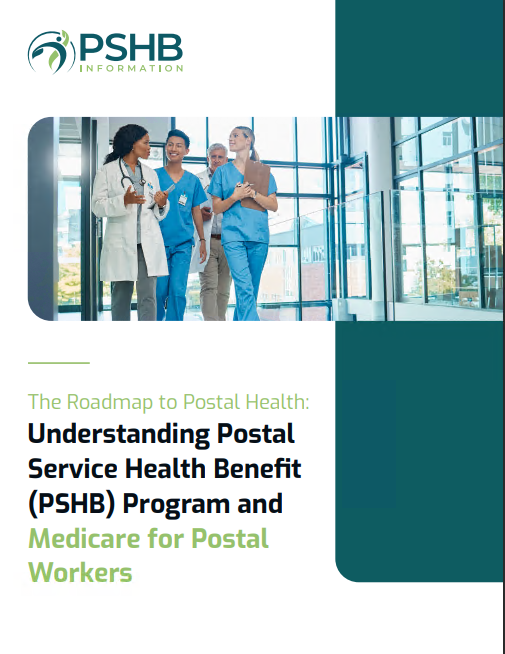Key Takeaways:
- The Postal Health Service Benefits (PSHB) program provides comprehensive vision and hearing care benefits specifically designed for aging postal workers.
- Understanding the services covered, eligibility criteria, and how to access these benefits ensures that postal workers can maintain their sensory health as they age.
PSHB Vision and Hearing Benefits: What Aging Postal Workers Need to Know
Aging postal workers face unique health challenges, including declining vision and hearing. The Postal Health Service Benefits (PSHB) program, effective from January 2025, offers comprehensive benefits to address these needs. This guide provides an overview of the vision and hearing benefits available under PSHB, including eligibility criteria, covered services, and how to access in-network providers.
Overview of PSHB Vision and Hearing Benefits
The PSHB program aims to support the overall well-being of postal workers, with a specific focus on sensory health as they age. Vision and hearing care are essential components of this support, ensuring that postal workers maintain their quality of life and ability to perform daily activities effectively.
Vision Care Benefits
PSHB covers a range of vision care services, including:
- Regular Eye Exams: Annual eye exams to monitor eye health and detect conditions early.
- Prescription Glasses and Contact Lenses: Coverage for corrective lenses to address vision impairments.
- Treatment for Eye Conditions: Coverage for medical treatments and surgeries for conditions like cataracts, glaucoma, and macular degeneration.
Hearing Care Benefits
Hearing care services under PSHB include:
- Hearing Tests: Regular audiometric evaluations to assess hearing ability.
- Hearing Aids: Financial assistance for hearing aids and related devices to improve hearing.
- Treatment for Hearing Conditions: Coverage for medical treatments and interventions for hearing loss and other auditory issues.
Eligibility Criteria for Vision and Hearing Care Coverage
To access vision and hearing care benefits under PSHB, postal workers must meet certain eligibility criteria. These criteria are designed to ensure that the benefits are available to those who need them most.
General Eligibility
- Postal Employees: Full-time and part-time postal employees are eligible for coverage.
- Retirees: Retired postal employees who are still covered under PSHB can access these services.
- Dependents: Spouses and children up to the age of 26 are typically covered under the plan.
Specific Requirements
- Enrollment in Health Plan: Postal workers must be enrolled in a PSHB plan.
- Proof of Employment: Recent pay stubs or an employment verification letter may be required.
- Medical Necessity: Certain treatments may require documentation from a healthcare provider to demonstrate medical necessity.
Types of Vision and Hearing Services Covered by PSHB
PSHB provides a broad spectrum of vision and hearing services designed to meet the diverse needs of aging postal workers. Understanding the scope of these services helps in utilizing the benefits effectively.
Vision Services
- Eye Exams: Regular comprehensive eye exams to monitor vision health and detect early signs of eye conditions.
- Corrective Lenses: Coverage for eyeglasses and contact lenses to correct vision impairments.
- Surgical Treatments: Coverage for surgical procedures such as cataract surgery and laser treatments for glaucoma.
- Specialized Care: Access to specialists for conditions like macular degeneration and diabetic retinopathy.
Hearing Services
- Hearing Evaluations: Comprehensive hearing tests to assess auditory health and identify hearing loss.
- Hearing Aids: Financial coverage for hearing aids, including fitting and maintenance.
- Advanced Hearing Devices: Coverage for advanced hearing solutions, such as cochlear implants, if deemed medically necessary.
- Rehabilitation Services: Access to auditory rehabilitation services to help adapt to hearing aids and improve communication skills.
How to Access In-Network Vision and Hearing Providers
Using in-network providers ensures that postal workers receive the highest level of coverage and minimize out-of-pocket expenses. Here’s how to find and choose in-network vision and hearing providers under PSHB.
Finding In-Network Providers
- Health Plan Directory: Utilize the PSHB online directory to search for in-network vision and hearing providers by location, specialty, and other criteria.
- Customer Service: Contact PSHB customer service for assistance in finding in-network providers and verifying their network status.
- Referrals: Seek recommendations from primary care physicians or other healthcare providers.
Choosing the Right Provider
- Credentials: Verify the provider’s credentials, including licensure and specialized training.
- Experience: Consider providers with experience in treating conditions common among aging postal workers.
- Reputation: Look for reviews and testimonials from other patients to gauge the quality of care provided.
Scheduling an Appointment
Once you have identified in-network providers, schedule an appointment for an initial consultation. This allows you to discuss your health concerns, treatment goals, and ensure that you feel comfortable with the provider.
Managing Costs and Co-Pays for Vision and Hearing Care under PSHB
Understanding the costs and co-pays associated with vision and hearing care is crucial for financial planning and avoiding unexpected expenses.
Typical Costs
- Co-Pays: Fixed amounts you pay for each service, such as eye exams and hearing tests. These typically range from $20 to $50 per visit.
- Deductibles: The amount you must pay out-of-pocket before your insurance begins to cover services. This varies depending on your specific health plan.
- Coinsurance: A percentage of the cost of services that you must pay after meeting your deductible.
Financial Planning
- Health Savings Accounts (HSAs): Use HSAs or Flexible Spending Accounts (FSAs) to cover co-pays and other out-of-pocket expenses with pre-tax dollars.
- In-Network Providers: Stick to in-network providers to take advantage of lower rates negotiated by your insurance plan.
Assistance Programs
- Sliding Scale Fees: Some providers offer sliding scale fees based on income, which can reduce out-of-pocket costs.
- Payment Plans: Discuss payment plans with your healthcare providers if you anticipate high costs.
Conclusion
The Postal Health Service Benefits (PSHB) program offers comprehensive vision and hearing care benefits to support the health and well-being of aging postal workers. By understanding the services covered, eligibility criteria, and how to access these benefits, postal workers can maintain their sensory health and quality of life. Utilizing these benefits not only enhances physical health but also contributes to overall well-being and the ability to perform daily activities effectively.
Contact Information:
Email: [email protected]
Phone: 8065556789






